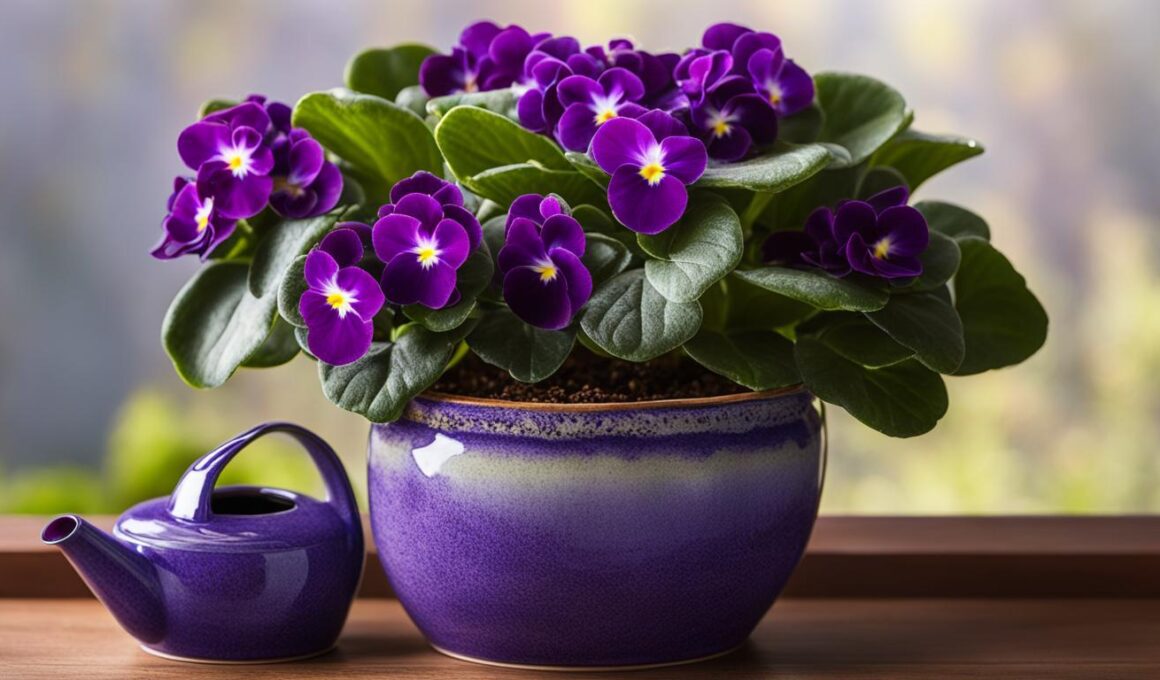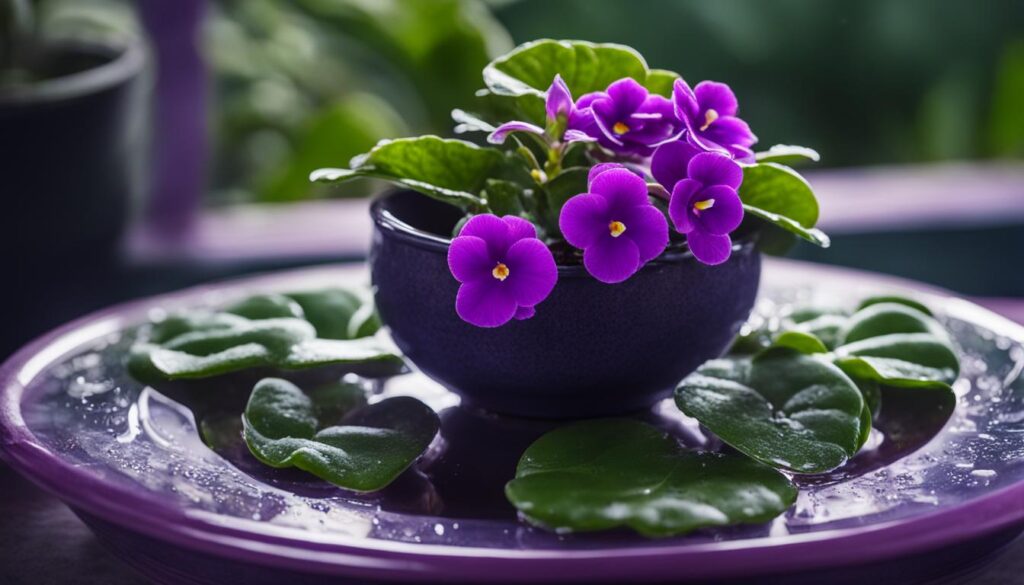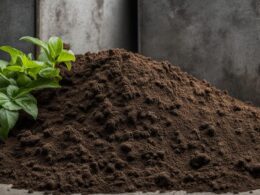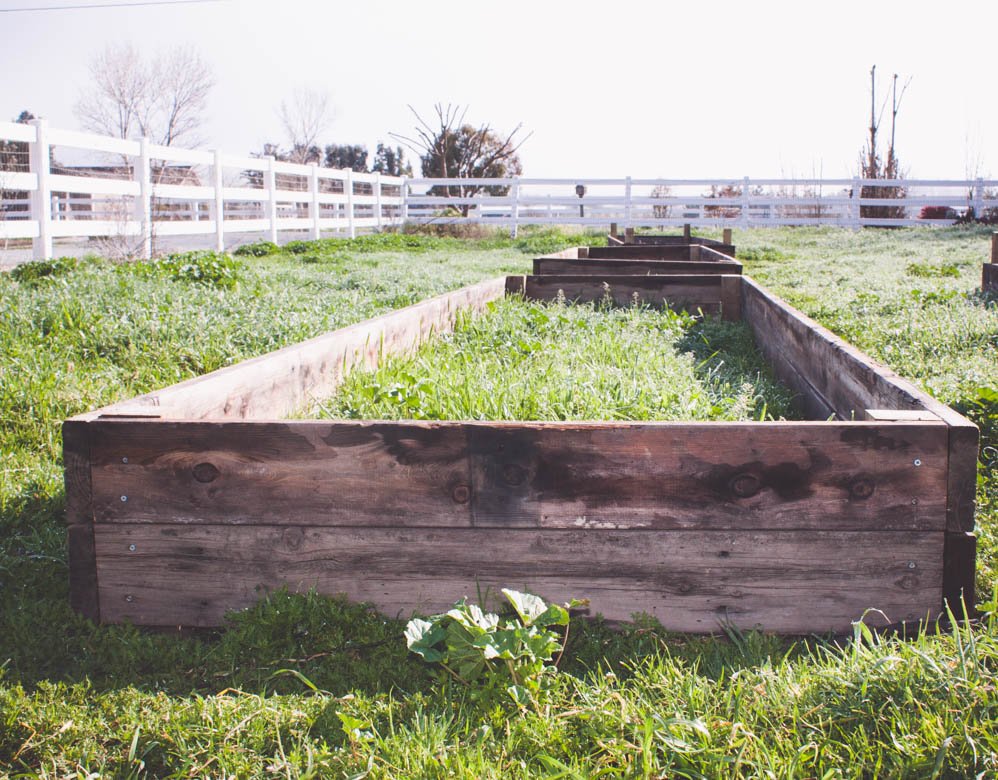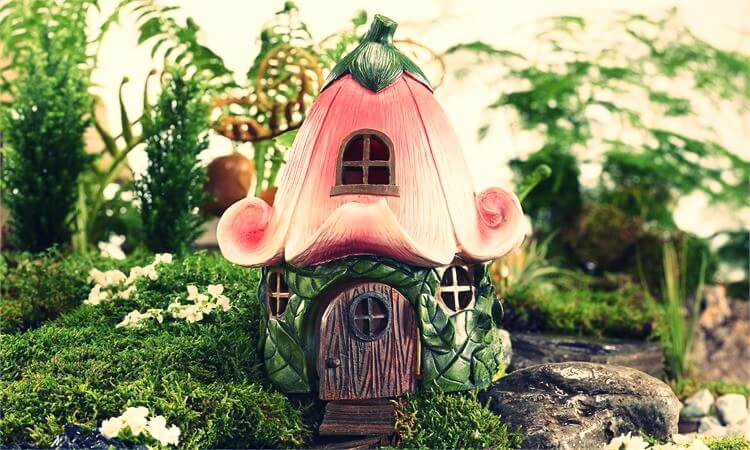Originating in Tanzania, African violets, or Saintpaulia ionantha, belong to the Gesneriaceae family, notable for their flowering species like Streptocarpus and Gloxinia. These plants are renowned for their variety stemming from mutations, exhibiting colors such as pink, mauve, white, and combinations thereof, along with foliage types like single or double blossoms, against velvety leaves. Cultivators have developed an array of hybrids to celebrate this diversity. Sizes vary from standard plants that grow 8–12 inches wide, to miniature 4-inch varieties. Fundamental to the care for African violets is understanding their need for specific lighting conditions, temperature and humidity preferences, watering techniques, soil composition, potting practices, fertilization requirements, and pest management.
Key Takeaways
- Maintain African violet health through proper lighting, temperature, and humidity
- Understand and choose from the diverse varieties of this indoor plant
- Master the unique watering techniques to keep African violets hydrated without overwatering
- Adopt the best potting practices and soil mixtures for growing vibrant African violets
- Fertilize and manage pests to ensure continuous growth and flowering
- Follow houseplant maintenance best practices for your African violets
- Enjoy your African violets’ bloom year-round by providing the right growing conditions
Discovering African Violets: An Introduction to Their Origins and Varieties
The captivating beauty of African violets captured the hearts of plant enthusiasts around the world since their first discovery. Found in 1892 by Baron Walter von Saint Paul in Tanzania, these flowering houseplants are descendants of the Saintpaulia ionantha species. Thanks to extensive hybridization, African violets are now available in a wide array of colors and forms, showcasing the rich plant diversity they encompass.
Originally bearing violet-colored flowers, African violets now come in other mesmerizing hues, including pink, white, and mauve. These plants, also known for their velvety leaves, can feature single or double flowers that add to their charm. The range of plant varieties extends to different sizes, from standard ones that can grow 8–12 inches wide to miniature variants, which only reach a width of about 4 inches.
Botanists and cultivators have propelled the evolution of African violet varieties by propagating new mutations. This process has resulted in unique flowering patterns and leaf shapes, making each plant a delightful spectacle. The table below highlights some popular African violet varieties and their distinctive features:
| Plant Name | Flower Color | Leaf Shape |
|---|---|---|
| American Halo | Bicolor pink and white | Quilted green |
| Blue Boy | Blue-violet | Ovate |
| Robs Galiwinku | Red and white | Bright green, ruffled |
| Coral Sands | Blush coral | Quilted |
| Sunrise Delight | Bicolor yellow and green | Long, narrow, and serrated |
By exploring the diverse origins and varieties of African violets, you can derive immense satisfaction from cultivating these enchanting plants in your indoor spaces. As you continue your journey in learning to care for African violets, keep in mind the wealth of options and combinations available, allowing you to create a stunningly unique plant display that caters to your aesthetic preferences and sense of style.
Optimizing Light Conditions for Thriving African Violets
Providing the right light conditions is crucial for maintaining the health and growth of your African violets. In this section, we will explore the differences between natural and artificial lighting options and how to adjust the light exposure to prevent common foliage problems.
Understanding Natural vs. Artificial Lighting Needs
African violets require 10–12 hours of strong light daily to mimic their natural shaded habitat beneath forest canopies. During the summer, these plants need filtered sunlight to prevent overexposure. In the winter, a southern exposure may be beneficial due to weaker sunlight.
Alternatively, artificial lighting can be reliably used to meet your African violets’ light requirements. A combination of 40-watt cool-white and warm-white fluorescent lights placed 8–12 inches above the plants ensures an appropriate photoperiod and intensity. Here is a table outlining the pros and cons of each lighting option:
| Lighting Type | Advantages | Disadvantages |
|---|---|---|
| Natural Sunlight | Provides full spectrum of light wavelengths, simulates natural habitat | Varies in intensity and duration based on seasonal changes |
| Artificial Lighting | Consistent light source, easily controlled in terms of intensity and duration | Lacks the full spectrum of light wavelengths found in sunlight |
Adjusting Light Exposure to Prevent Foliage Issues
Properly adjusting light exposure is essential for preventing common foliage problems in African violets. If your plant has dark green leaves but no blooms, it may require more light. Conversely, pale leaves may suggest a need for light reduction. In general, African violets prefer bright, indirect sunlight.
An ideal setup for these plants includes fluorescent lights placed 12 to 15 inches above the leaves. This positioning helps to avoid light-induced stresses such as pale or dark green leaves. Here are some tips for adjusting the light exposure for your African violets:
- Be mindful of the changing light intensity throughout the year and adjust your plant’s position accordingly.
- When using artificial lights, consider adding a timer to maintain a consistent photoperiod.
- Rotate your plants every two weeks to ensure even light distribution across the foliage.
By understanding the differences between natural and artificial lighting options, and knowing how to adjust the light exposure to prevent common foliage issues, you can provide the best possible growing environment for your African violets. This will help to maintain their vibrant appearance and promote healthy growth.
Maintaining the Perfect Temperature and Humidity for African Violets
African violets thrive in indoor environments with temperatures between 65°F and 80°F, complemented by approximately 80% humidity. To sustain this ideal indoor plant climate, temperature and humidity fluctuations must be avoided, including exposure to sudden drafts. Use a humidifier or a tray with gravel and water to increase humidity, but never mist the foliage directly to avoid leaf spotting.
To further enhance the ideal growing conditions for your African violets, consider the following strategies:
- Regularly monitor temperature and humidity levels throughout the day to prevent sudden changes.
- Avoid placing your African violets near heat sources such as vents, radiators, or appliances that can alter the surrounding temperature and humidity.
- When using a humidifier, maintain proper cleaning and maintenance to prevent the growth of mold, which can negatively affect your African violets.
Moreover, it may be helpful to review a summary of the key elements involved in maintaining the perfect temperature and humidity for African violets:
| Parameter | Optimal Range |
|---|---|
| Temperature | 65°F – 80°F |
| Humidity | Approximately 80% |
| Temperature Fluctuations | Avoid sudden changes |
By carefully managing these essential aspects of the African violet temperature and African violet humidity, you can contribute to a healthy and contented plant that flourishes in your indoor living space.
Watering Techniques: Ensuring African Violet Health Without Overwatering
Proper watering is essential to ensure the health of your African violets. Both overwatering and underwatering can lead to undesirable consequences such as root rot and crown rot. The following techniques can help maintain the optimal level of hydration and prevent common issues related to watering.
Mastering the Art of Bottom Watering
The bottom watering technique is a popular method for watering African violets which aids in preventing crown rot. By using this technique, you can protect the vulnerable crown area of the plant, as well as avoid overwatering.
- Fill a saucer with room-temperature water.
- Place the African violet pot into the saucer, allowing the water to be absorbed through the drain hole at the bottom of the pot.
- Leave the pot in the saucer for 15 to 30 minutes to allow adequate absorption of the water.
- Remove the pot from the saucer and ensure it is not submerged in water to avoid root rot.
It is best to monitor the moisture level of the soil and water the plant when the soil becomes slightly dry to touch rather than sticking to a specific watering schedule.
Introducing Self-Watering Methods for African Violets
Self-watering methods, such as wicking watering systems and self-watering pots, are excellent alternatives for houseplant hydration. These techniques not only aid in maintaining a consistent moisture level in the soil but also contribute to maintaining ambient humidity levels around the plant.
Wicking Watering System:
- Choose a synthetic cord as a wick, and bury one end into the soil.
- Place the other end of the cord into a saucer filled with water.
- Ensure a layer of gravel separates the plant from direct contact with water to prevent root rot.
Self-Watering Pots:
- Select a specialty self-watering pot with a glazed outer pot and a porous inner pot.
- Fill the outer pot with water, allowing the porous inner pot to absorb moisture as needed.
- This method works similarly to the wicking watering system and helps to maintain consistent humidity levels.
By employing these watering techniques and closely monitoring the hydration needs of your African violets, you can ensure their health and longevity. Remember, a well-hydrated plant is a happy plant.
The Ideal Soil Mixture and Potting Practices for African Violets
African violets are delicate houseplants that need a specific African violet soil mix and potting practices to thrive. Achieving the perfect combination of soil components to promote healthy growth and maintaining an proper pot size is crucial for keeping these charming indoor plants blooming all year round. This section will guide you through creating an ideal soil mix, potting African violets, and ensuring their successful growth as houseplants.
To create the ideal African violet soil mix for your plants, consider the following key components:
- Equal parts of peat, perlite, and vermiculite
- Dolomite lime to achieve a pH balance between 6.0 and 7.0
- Lightweight soil mixture to ensure proper drainage
These essential ingredients create a well-aerated and well-drained houseplant soil that provides African violets with the perfect growing environment. Along with mixing your own soil, specialized potting mixes for African violets can also be purchased for those who prefer ready-made solutions.
When potting African violets, it’s best to repot them annually, as they prefer to be slightly root-bound. The container diameter should be approximately one-third the width of the plant’s leaf span. As your African violets grow, pay close attention to the size of their pot and ensure it is not too tight or spacious for their root system.
Having the right potting practices for repotting indoor plants brightens their appearance, encourages new growth, and keeps your African violets healthy. With the correct pot size, proper soil mixture, and diligent care, your African violets will reward you with colorful blooms all year round.
Fertilizing African Violets: Finding the Right Balance
Proper plant nutrition is essential to the healthy growth and continuous blooming of your African violets. A balanced feeding regimen ensures that your houseplants receive the necessary nutrients without risking overfertilization, which may harm your plants.
For optimal growth, use an African violet fertilizer, specifically designed for these delicate plants. A balanced liquid fertilizer, such as a 20-20-20 formula, provides equal concentrations of nitrogen, phosphorus, and potassium, which are crucial elements for flourishing plants. If you prefer specialized fertilizers, opt for African violet food that caters to the unique needs of these plants.
- Apply the fertilizer at half or one-quarter strength with each watering to avoid root damage caused by overfertilization.
- Overfertilization may lead to salt buildup, which can harm the leaves and stems of your African violets. Moderate the frequency of your fertilization to prevent this issue.
- Ensure that you have a proper watering method in place to protect your plants from the detrimental effects of incorrect fertilization.
To further support the balanced feeding of your houseplants, consider following these best practices:
- Monitor your plants regularly to identify any signs of nutrient deficiencies or excesses. Yellowing or wilting leaves, lack of blooms, and stunted growth could indicate imbalance in plant nutrition.
- Review the manufacturer’s instructions on the African violet fertilizer packaging. Follow their recommendations on application rates and frequencies to ensure that you provide the right amount of nutrients.
- Repot your violets annually in fresh, nutrient-rich soil. This practice helps to replenish the essential nutrients in the growing medium and promotes healthy root development.
Maintaining a balanced feeding regimen for your African violets is achievable with attention to detail and proper care. By understanding the specific needs of these plants and applying the right African violet fertilizer, you can enjoy thriving and flourishing houseplants.
Keeping Your African Violets Pest-Free and Flourishing
One of the essential aspects of maintaining healthy African violets is effective pest control. By closely monitoring your plants and taking swift action, you can prevent pests from causing irreparable damage to your beautiful blooms.
Identifying and Addressing Common Pests
Common pests that can afflict African violets include mealybugs, aphids, and spider mites. Some indicators of infestations are white cottony deposits, stunted growth, and distorted leaves. To control these pests, follow these general guidelines:
- Do not overfertilize, as this can encourage pests to thrive
- Establish a barrier between the plant and the pot to prevent salt contact
- Use glazed ceramic or plastic pots instead of porous clay pots that can harbor pests
For severe infestations, seek guidance on appropriate treatments from local garden centers or university extension offices. Common treatments include neem oil and specific insecticides.
Pest Prevention for Healthy Plant Maintenance
Maintaining a healthy plant environment is crucial for preventing pests from taking up residence in your African violets. Here are several key practices:
- Ensure proper watering techniques: Overwatering or underwatering can stress plants, making them more susceptible to pests.
- Maintain appropriate humidity levels: As mentioned in earlier sections, optimal humidity levels promote overall plant health and resistance.
- Regularly clean your plant’s leaves with a soft cloth to remove dust and deter pests.
- Inspect any new plants carefully before introducing them to your collection to prevent introducing pests to your existing plants.
By implementing these pest control and prevention measures, you can protect your African violets from harmful pests, helping them to flourish and thrive in optimum conditions.
What are the best care practices for preventing African violet leaves from turning yellow?
To prevent African violet yellow leaves causes, it’s essential to maintain proper care practices. Ensure they’re not over-watered, receive adequate sunlight, and are fertilized regularly. Use well-draining soil and provide consistent humidity. Keep an eye out for pests and diseases and address any issues promptly.
Conclusion: Cultivating Long-Lasting Beauty with African Violets
By providing consistent care tailored to their specific needs, African violets can become an enduring and blooming houseplant that enlivens any indoor space all year round. Growing vibrant African violets starts with paying close attention to crucial factors such as light, temperature, moisture, and nutrients. Ensuring these fundamentals are in place will promote active growth and sustain continuous flowering, allowing your African violets to not only survive but thrive in the long run.
Optimal plant care begins with selecting healthy African violets. Moreover, don’t forget the importance of using the right pot size for your plants and taking precautions against damage to the leaves. By adhering to these best practices, you set the stage for your African violets to flourish and bring a touch of natural beauty indoors for many years to come.
In summary, follow the plant care tips and expert advice outlined in this comprehensive guide to help your African violets remain long-lasting, healthy, and vibrant. These charming houseplants with their vivid colors and unique foliage reward the dedicated caretaker with a stunning display of nature’s beauty right inside the home.





